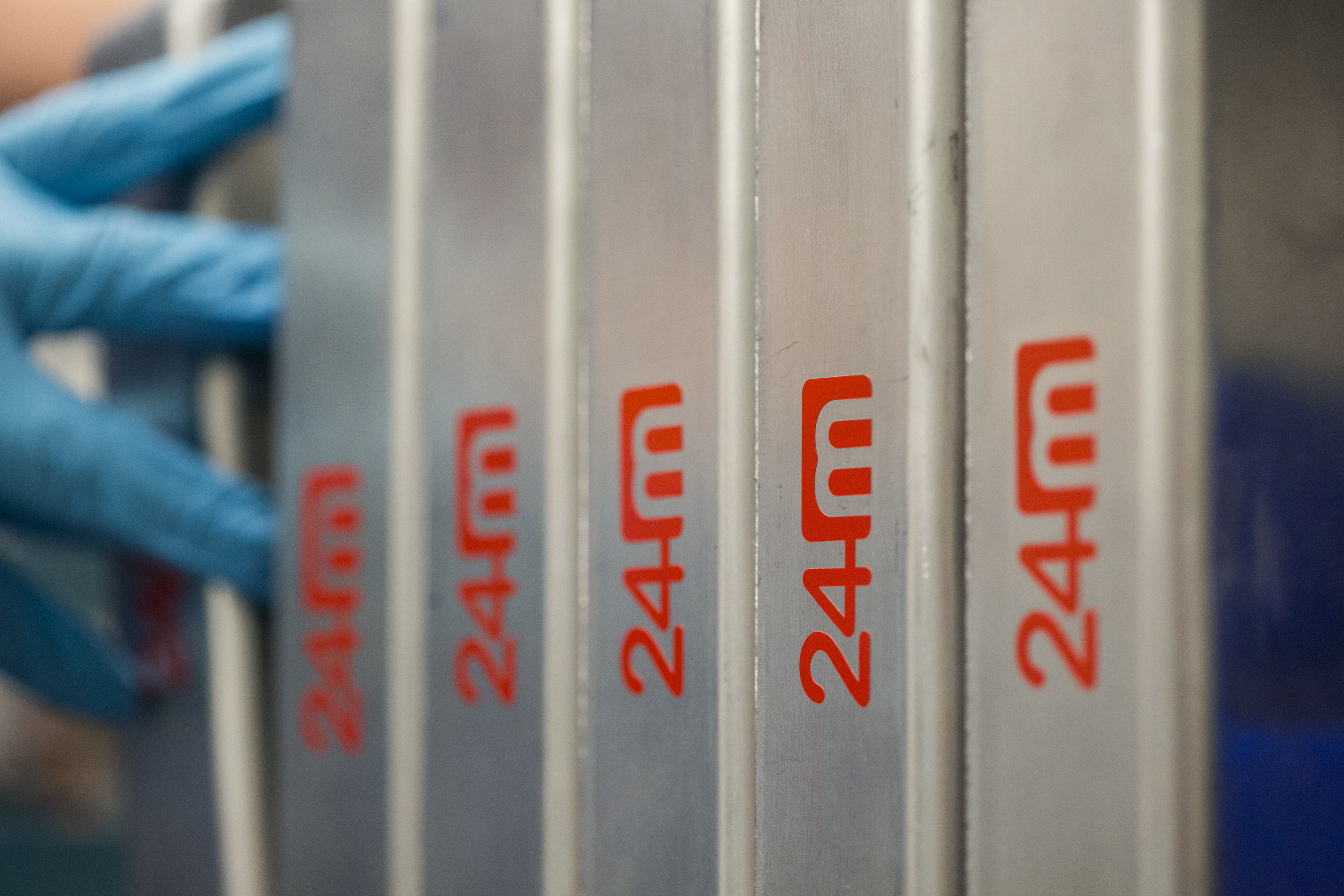A long-awaited battery that would cut electric-vehicle costs may finally be close

In 2010, a pair of MIT materials scientists helped launch 24M, promising to deliver cheaper, better batteries by stripping out inactive materials in the electrodes.
Eight years later, you still can’t buy the startup’s products. But in an interview last week, chief executive Rick Feldt said the “semisolid” lithium-ion batteries built in the company’s pilot lab have leapfrogged those on the market today in terms of energy density. 24M will begin working with an industrial partner next year to develop a small commercial plant and hopes to deliver its first products in 2020—five years past the company’s original time line.
Higher energy density means batteries cost less, weigh less, and last longer, promising electric vehicles without the sticker shock or range anxiety, or phones that don’t demand an extra battery pack to get through the day.
On Monday, the company will announce it has raised nearly $22 million in funding, which it will invest in the manufacturing facility and in research efforts to boost energy density further. Two Japanese companies led the round: the ceramics and electronics giant Kyocera Group and Itochu, a textiles and trading business.
The initial target market for the batteries is electric vehicles, but the company has also highlighted the potential for its technology to improve grid energy storage (see “24M’s batteries could better harness wind and solar power”).
24M aims to simplify the design of the lithium-ion battery. In standard versions like the ones in a Tesla vehicle, the electrodes that carry current into and out of a cell are arranged as a series of layers and then wound together into what’s known as a jelly roll. By using different materials, 24M can cast electrodes that are four to five times thicker, and immediately pair those anodes and cathodes together in a cell.
This approach avoids a number of steps in the manufacturing process and significantly cuts down the need for inactive materials like copper, aluminum, and plastics. This, in turn, reduces costs and energy needs, and ensures that more of the electrodes themselves are dedicated to the core task of storing energy.
The lab-scale version of 24M’s batteries have an energy density between 280 and 300 watt-hours per kilogram (Wh/kg). That exceeds the roughly 250 Wh/kg of most top-end batteries now on the market.
The company is also working on a different technical path that could create lithium-ion batteries capable of reaching energy densities close to 500 Wh/kg. The company says they’ve already demonstrated that densities above 350 Wh/kg are feasible using this approach in the lab. But that relies on a very thick separator between the electrodes that would need to be scaled down to work on a commercial level.
Many other companies and researchers are aggressively pursuing different paths to higher energy density, including alternative electrode chemistries and solid electrolytes (see “This battery advance could make electric vehicles far cheaper”).
It’s still far from clear which companies and standards will ultimately win the prolonged race to higher density, but those that do could dominate massive and growing markets for powering gadgets, grids, vehicles, and someday even planes (see “A powerful new battery could give us electric planes that don’t pollute”).
Update: An earlier version of this headline incorrectly said that the company's energy density improvements could double the range of electric vehicles.
Deep Dive
Climate change and energy
The problem with plug-in hybrids? Their drivers.
Plug-in hybrids are often sold as a transition to EVs, but new data from Europe shows we’re still underestimating the emissions they produce.
Harvard has halted its long-planned atmospheric geoengineering experiment
The decision follows years of controversy and the departure of one of the program’s key researchers.
Why hydrogen is losing the race to power cleaner cars
Batteries are dominating zero-emissions vehicles, and the fuel has better uses elsewhere.
Decarbonizing production of energy is a quick win
Clean technologies, including carbon management platforms, enable the global energy industry to play a crucial role in the transition to net zero.
Stay connected
Get the latest updates from
MIT Technology Review
Discover special offers, top stories, upcoming events, and more.